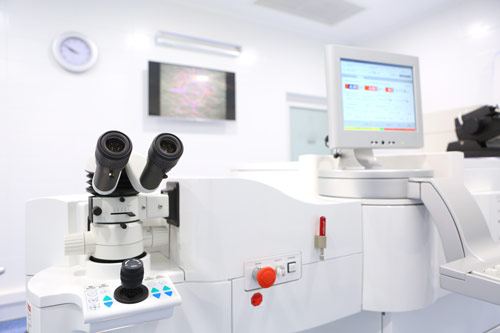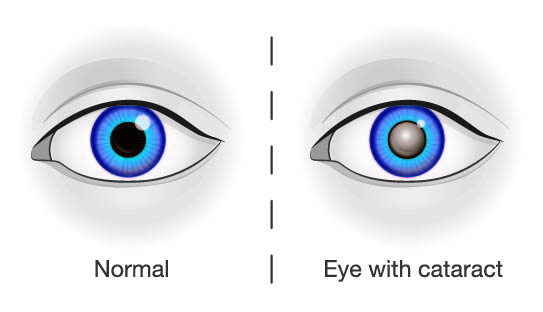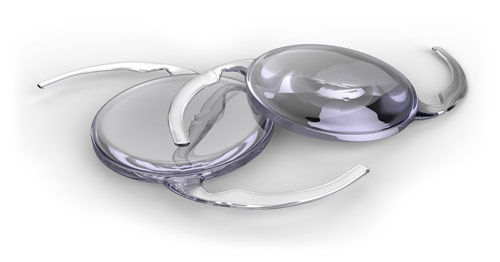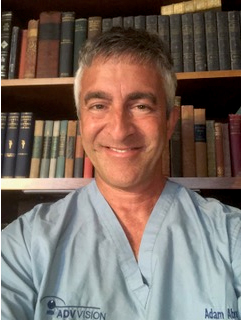Your Options for Cataract Surgery
If your cataracts are affecting your quality of life and hindering your ability to perform your daily activities, it’s time to consider cataract surgery. Cataracts cannot be treated with eyedrops or medicine, cataract surgery is the only true treatment option.
At its most basic, cataract surgery is the removal of the clouded lens and the replacement of your eye’s natural lens with a clear artificial lens. At ADV Vision, our cataract surgeons offer a range of state-of-the-art surgery options for cataract removal.
Only you and your doctor can decide if cataract surgery is right for you. The first step is to schedule a cataract exam (typically covered by your medical insurance) or cataract surgery consultation. During this examination, you will undergo a comprehensive eye exam to examine your eye, test your vision, and discuss the options available to you.
Your options for cataract surgery include traditional cataract surgery and advanced laser cataract surgery.
Traditional Cataract Surgery
During traditional cataract surgery, your surgeon will create a very small incision on the side of your cornea to access the clouded lens. Then a process called phacoemulsification is induced to by ultrasonic energy which breaks up the cataract into tiny fragments. The fragments are then gently removed from the eye via suction.
Traditional cataract surgery is most commonly covered by your medical insurance.
Advanced Laser-assisted Cataract Surgery
During a laser-assisted cataract surgery procedure, your surgeon will use an advanced femtosecond laser to create a precise incision on the side of your cornea in order to access the clouded lens.
Learn About Blade-Free All-Laser Cataract Surgery:
The femtosecond laser then uses near-infared light to “soften” the cataract and break it up into tiny pieces which are then removed via suction. The incision heals by itself, and no stitches are needed.
The biggest distinctions between traditional cataract surgery and advanced are in the instruments and techniques used. The femtosecond laser used in advanced cataract surgery replaces the hand-held blade and tools typically used by your surgeon in basic cataract surgery.
Laser cataract surgery is bladeless and mostly computer-controlled, which helps to both automate and safeguard some of the traditionally challenging steps of the surgery.
Laser-assisted cataract surgery has been shown to improve the precision and safety of traditional cataract surgery.
Before Your Cataract Surgery
Like any operation, small-incision cataract surgery requires preparation. Your doctor needs to know your health history and examine your eyes carefully. And you too must take steps to prepare.
Your Health History
During your initial cataract exam, your doctor will review your health history. Based on that, he or she will likely refer to your primary healthcare provider to clear you for surgery. Tell your doctor which medicines you take. That includes both prescription and over-the-counter medicines such as aspirin.
Your Eye Exam
You will have a thorough dilated eye exam that may take up to 2½ hours. Your eye doctor or a technician will use devices that measure the length and curve of your eye. These measurements then let your doctor select the proper intraocular lens (AKA IOL) for you.
The Night Before Surgery
Don’t eat or drink anything 8 hours prior to your surgery. This includes water, coffee, chewing gum, and mints. If you have been told to continue your daily medication, take it only with small sips of water. Make sure you follow any other instructions your doctor gives you.
The Day of Your Cataract Surgery
Have someone you know drive you to and from the outpatient surgery center. Plan to be there for about 2 to 3 hours. When you arrive, you’ll sign an additional consent form. This form explains the risks of surgery.
Just before surgery, the anesthesiologist will give you medicine that will relax you and keep you from feeling pain. You may sleep lightly.
Cataract surgery is a very safe and effective procedure. In fact, cataract removal is one of the most common surgeries performed today. A high percentage of patients get significantly improved vision after cataract surgery. The risks of cataract surgery are low, but exist. Your doctor will discuss this in detail prior to surgery.
During cataract surgery, your surgeon will remove the cloudy lens of your eye and replace it with an artificial lens called an Intraocular Lens (IOL) in a procedure that typically takes 7-10 minutes and is performed under topical (eyedrop) anesthesia in addition to a relaxing medication that is given by mouth or IV. Cataract surgery is typically comfortable and often results in much better vision in the first few days after surgery.
What is a Cataract?
A cataract is a naturally-occurring clouding of the eye’s lens. In a healthy eye, the lens is clear and allows light to pass through easily, resulting in clear vision. When a cataract forms, the clouding of the eye’s lens causes your vision to become blurry or hazy.
What Are the Symptoms of Cataracts?
The primary sign you have a cataract is blurry vision. Many cataract patients experience foggy vision, difficulty seeing in dim or low light, and seeing ‘halos’ around lights.
If you experiencing these symptoms or any noticeable changes in your vision, you should schedule an appointment for a comprehensive eye exam. Your doctor will perform a series of tests to examine your eye and detect signs of cataract formation.
Your Options for Intraocular Lenses (IOL's)
You doctor will work with you to determine the best intraocular lens (IOL) for implantation after surgery. An IOL is a small lens which is inserted into the eye to replace the eye’s natural lens which is removed during cataract surgery. The IOL helps to focus light onto your retina and allows you to see clearly.
Choosing the right IOL for you is one of the most important steps of the cataract surgery process.
There are three main categories of IOL’s: Monofocal, multifocal, and toric
Monofocal IOL
A monofocal IOL is the standard intraocular lens which corrects vision at one distance. Your surgeon will work with you to determine a monofocal IOL which corrects for near, mid, or distant focus. Most patients have their vision corrected for distance and will still need to rely on glasses or bifocals for seeing up close. Most monofocal IOL’s are covered under insurance.
Multifocal IOL
A multifocal IOL is a premium intraocular lens which can correct vision at multiple distances. A multifocal lens can help restore your vision for up close, far away and everything in between.
Multifocal IOLs are a great option for those who wish to correct both their distance at multiple distances and not rely on reading glasses after surgery.
Toric IOL
A toric IOL is a premium intraocular lens designed specifically for patients with astigmatism. A toric IOL will correct your vision for both astigmatism and distance vision but you will need to rely on glasses or bifocals for near vision.
We utilize all of the new and most advanced lens implants, including those by Alcon, AMO, and Lenstec.
Your cataract surgeon will work with you to determine which IOL is best to address your specific vision needs and goals.
Insurances Accepted
- Anthem Blue Cross
- BlueShield
- Aetna
- Cigna
- UHC PPO’s
- Medicare
- Cencal
- Veterans Administration
- Tricare
- GEHA
- Humana
Your Local Choice Cataract Surgery in Paso Robles, Santa Maria, and San Luis Obispo
ADV Vision is Central California’s premier clinic for cataract surgery. We utilize the most advanced technology available for our patients, giving you the best postoperative results possible. If you’re ready to improve your vision with cataract surgery, the first step is to call one of our locations in Paso Robles, Santa Maria, or San Luis Obispo, or schedule a consultation online today.
Learn About the Pre-Operative and Post-Operative Process for Cataract Surgery In Our Educational Videos:
Pre-Operative Instructions and What to Expect on the Day of Your Surgery:
Post-Operative Instructions and What to Expect After Your Surgery:






